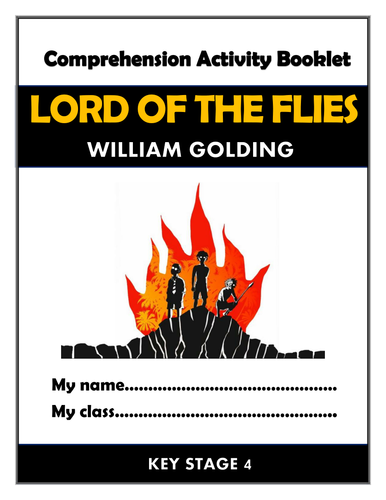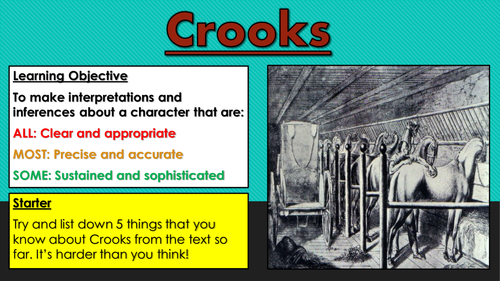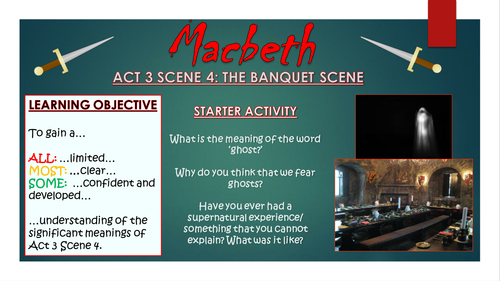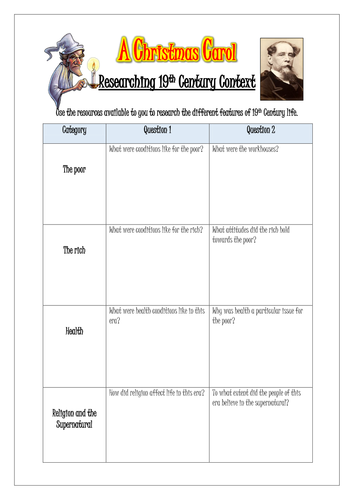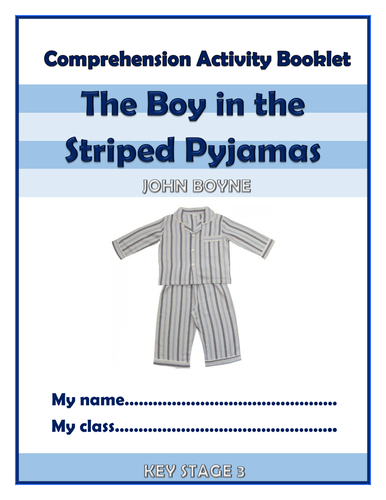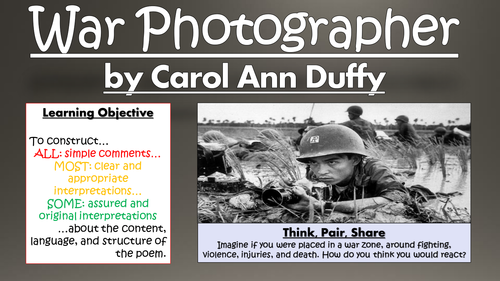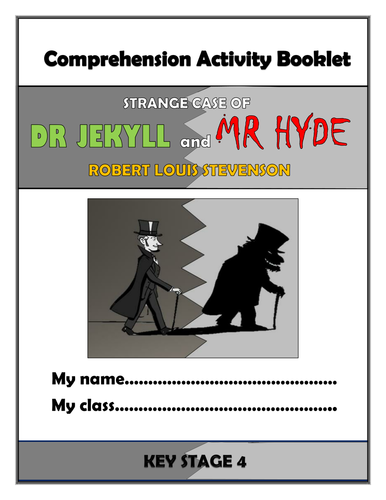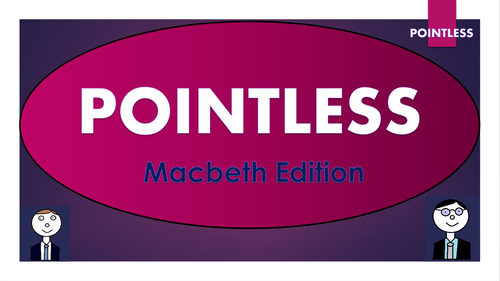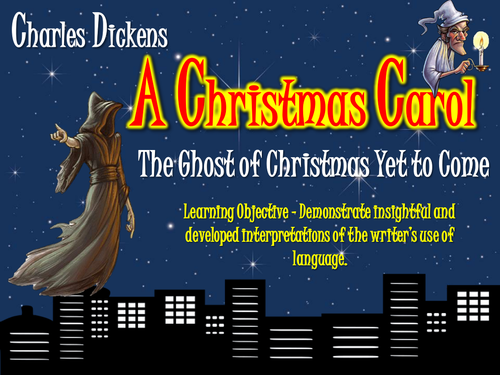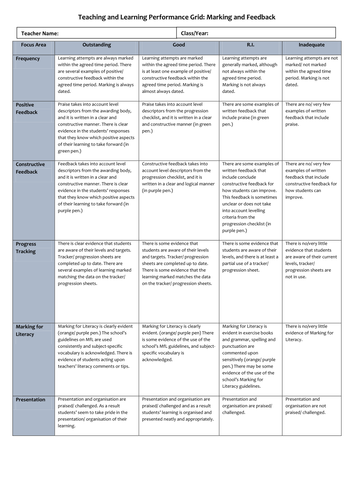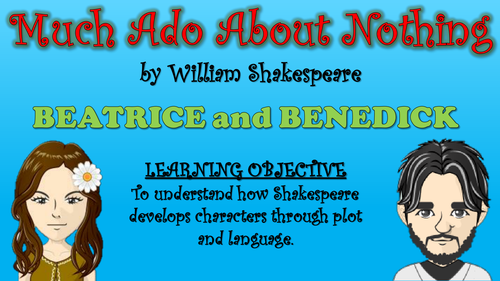
3k+Uploads
1906k+Views
2238k+Downloads
Pedagogy and professional development
Bundle Sale

Much Ado About Nothing Big Bundle! (All Lessons, Resources, Plans, Everything!)
THIS BUNDLE CONTAINS ALL OF THE ‘MUCH ADO ABOUT NOTHING’ LESSONS, PLUS THE COMPREHENSION BOOKLETS (for both KS3 and KS4) AND THE POINTLESS GAME!
This engaging, varied, and informative scheme of learning is designed to help students gain understanding, assessment skills, and key interpretations of William Shakespeare’s tragedy ‘Much Ado About Nothing.’ Made up of a wide-range of interesting and exciting lessons, students should complete this scheme having gathered vital skills in: interpreting the significant meanings of the text, understanding the writer’s ideas within the text, identifying the traits of key characters, settings, and themes, understanding dramatic and language devices, and relating the text to its social and historical context.
Stimulating, visual, and easily adaptable, these lessons provide suggested learning objectives and outcomes for students of a wide-range of abilities - The vast majority of tasks are differentiated to allow for different abilities and needs in your classroom. Each lesson loosely follows this logical learning journey to ensure that students learn in bite-size steps:
- Engaging
- Defining/ Understanding
- Identifying/Remembering
- Analysing/ Creating
- Peer or self evaluating.
All of the lessons are interactive, employ a variety of different teaching and learning methods and styles, and are visually-engaging. Resources, worksheets, and lesson plans are all provided. There is a 20 page comprehension booklet, and also a fun ‘Pointless’ Game included, to enhance your students’ knowledge of the text!
Sale

Lord of the Flies Comprehension Activities Bundle!
This resource booklet contains a wide range of age-appropriate, engaging, and meaningful comprehension activities for use throughout the reading of William Golding’s ‘Lord of the Flies.’ Teachers have found them particularly useful in exam revision, comprehension tasks, or guided reading sessions. They are perfect for aiding the progress of students towards meeting the KS4 expectations within the new National Curriculum framework - this makes the tasks suitable for all examining bodies. Students have found these resources extremely engaging, and for teachers there is explicit information within each task regarding which comprehension strands the task is designed to demonstrate. They also relate to key extracts, characters, and themes from the story, ensuring that students gain a deep understanding of the text.
Activities within the booklet include:
- ‘Context: The Barbaric Nature of World War II’ - to aid students with ‘Drawing on knowledge of the purpose, audience and context of the writing, including its social, historical and cultural context and the literary tradition to which it belongs, to inform evaluation;’
- ‘Golding’s Description’ - to aid students with ‘Analysing a writer’s choice of vocabulary, form, grammatical and structural features, and evaluating their effectiveness and impact;’
- ‘Jack’ and ‘Simon’ - to aid students with ‘Seeking evidence in the text to support a point of view, including justifying inferences with evidence;’
- ‘Editing the Text’ - to aid students with ‘Making an informed personal response, recognising that other responses to a text are possible and evaluating these.’
Plus many, many more activities (the booklet is around 30 pages in length!) I’ve also added it as a PDF in case the formatting differs on your computer.
All images are licensed for commercial use, and are cited on a separate document (included).
Bundle Sale

Travel Writing Big Bundle!
Contains all of the Travel Writing Lessons Travel Brochure Writing!
These engaging and detailed resources have been designed to make the teaching and learning of Travel Writing exciting, interesting, and easily accessible for all children. Throughout each lesson, students consider a different element of their writing (content, language, and structure) in order to produce imaginative and appropriate travel writing texts. Each lesson contains a comprehensive whole lesson PowerPoint, all the resources that you will need, and a lesson plan.
Included are the following lessons:
1. Travel Writing: Crafting Imaginative Content
2. Travel Writing: Constructing Imaginative Language;
3. Travel Writing: Creating Imaginative Structures
4. Travel Brochure Writing
All images are licensed for commercial use, and are cited on the final slide of the PowerPoint/ the bottom of worksheets.
Bundle Sale

Personal Development Assemblies Huge Bundle!
These fun and original assemblies have been designed aid children in developing their skills of:
Compassion
Honesty
Resilience
Humility
Celebrating differences
Thankfulness
Patience
Peace
Creativity
All of the assemblies are tried and tested, and each has been really well received in the past.
The slides are visually engaging and well-presented, and the subject matter is tailored to the interests and needs of young people. For example, there are references to scenarios and dilemmas that they themselves might find themselves in, in order to help them to make the right choices in their own lives.
There are also fun role-play activities, beautiful, thought-provoking videos exemplifying each theme, and various discussion activities regarding how to show the skills in different areas of their own lives. No further resources are required, everything that you need to present the assemblies is included.
Each set of slides are fairly self-explanatory, but I’ve included guidance notes for each assembly to assist the speaker. Hope that you find this useful!

Of Mice and Men: Characterisation of Crooks
This engaging and informative lesson aims to improve students' knowledge and understanding of the character of Crooks in Steinbeck's Of Mice and Men: His dreams, his loneliness, and how his plight is a product of living in 1930s America. The lesson also aims to improve students' analytical skills, so that they can demonstrate sustained and sophisticated interpretations of the character.
This pack includes the full lesson presentation, with tasks and key information, an extract from the text with close reading questions, a writing to analyse help-sheet, and full teacher guidance. The learning journey is clear and progressive, following a pathway of increasingly more difficult tasks, including:
- An opening task to ascertain what is known about Crooks, and racism in 1930s America
- An extract from the text that highlights some of his characteristics and his loneliness.
- Questions to encourage students to infer and deduce hidden meanings, and understand Steinbeck's message,
- Joint creation of an analysis success criteria;
- An opportunity to answer an exam style question based upon the character of Crooks;
- A chance to peer assess against the success criteria.
All images are licensed for commercial use, and are cited on the final slide of the presentation.
You can choose to buy this resource alone, or as part of the 'Of Mice and Men - All Lessons and Scheme' bundle, which contains seven full lessons, resources, teachers notes, and PowerPoint presentations, plus a Pointless Of Mice and Men game, for just £5!

Macbeth: Act 3 Scene 4 - The Ghost (Banquet) Scene!
This lesson aims to improve students’ understanding of one of the key scenes in William Shakespeare’s Macbeth – Act III Scene IV. In particular, they learn to make insightful interpretations about the changing nature of Macbeth’s tone throughout the scene, and are enabled to understand how this would have affected Shakespearean audiences.
The lesson utilises a range of tasks, that require students to be visual and interactive learners. It follows this learning journey:
- Defining the key term 'tone' and establishing its importance as a literary technique;
- Understanding how tone is used to depict mood and attitude across a range of fiction;
- Reading and interpreting Act 3 Scene 4, and establishing how Macbeth's tone alters throughout;
- Reflecting upon why this may/ what effect this may have had on audiences at the time;
- Summarising the events of the scene;
- Analysing Shakespeare's intentions in sharply altering Macbeth's tone throughout;
- Peer/self evaluating the learning in the lesson.
Included in this resource pack are:
- A well-presented, thorough, and informative, whole-lesson PowerPoint presentation;
- Resources for the reading and interpreting activity - full scene transcript with space for notes;
- A template to help scaffold the main task, complete with P.E.E instructions;
- Cards for the card sorting group activity
- A comprehensive teacher guidance form/lesson plan to assist delivery.
All images in this resource are licensed for commercial use, and are cited on the final slide of the lesson presentation.

A Christmas Carol: The Context of Victorian Britain!
This engaging and informative lesson students to make sustained and developed links between Dickens’ A Christmas Carol and its social and historical context. In particular, students learn about the harsh treatment of the poor in Victorian society, the selfishness and cruelty of those in power, and attitudes towards sin, religion, and the supernatural. The lesson explores how Dickens explores these ideas through the allegorical nature of the text.
The lesson follows a step-by-step learning journey, in which children learn through:
- Understanding key information about Charles Dickens, his life, and influences;
- Researching and sharing key contextual understanding about the rich, poor, healthcare, and religion in the 19th Century;
- Reading Stave 1 of ‘A Christmas Carol’ and identifying evidence of contextual influences;
- Analysing how Dickens presents his views about the cruelty of 19th Century life through the opening of the text;
- Peer assessing each other’s learning attempts.
Included is:
- Whole lesson PowerPoint - colourful and comprehensive;
- Extract - Chapter 1 of A Christmas Carol;
- Template for researching 19th Century life (and completed answer sheet for teachers);
- Analysis template with success criteria for creating well-structured responses;
- Comprehensive lesson plan.
There are also opportunities for group learning, peer assessment, and whole class discussion. This was originally taught to mixed ability year 10 groups, but can easily be differentiated for groups of different ages and abilities.
All images are licensed for commercial use, and image rights are listed on the last page of the presentation.

The Boy in the Striped Pyjamas - KS3 Comprehension Activities Booklet!
This resource booklet contains a wide range of age-appropriate, engaging, and meaningful comprehension activities for use throughout the reading of John Boyne's 'The Boy in the Striped Pyjamas.' Teachers have found them particularly useful in comprehension or guided reading sessions. They are perfect for aiding the progress of children towards meeting the KS3 expectations within the new National Curriculum framework. Children have found these resources extremely engaging, and for teachers there is explicit information within each task regarding which comprehension strands the task is designed to demonstrate. They also relate to key extracts, characters, and themes from the story, ensuring that children gain a deep understanding of the text.
Activities within the booklet include:
- 'Context: The Holocaust' - to enable students to demonstrate that they can: 'Know the purpose, audience and context of the writing and drawing on this knowledge to support comprehension.'
- 'Boyne's Description - The Ending' - to enable students to demonstrate that they can: 'Know how language, including figurative language, vocabulary choice, grammar, text structure and organisational features, present meaning.'
- 'Bruno's Father' and 'Shmuel' - to enable students to demonstrate that they can: 'Study setting, plot, and characterisation, and the effects of these.'
- 'Vocabulary Inspector' - to enable students to demonstrate that they can: 'Learn new vocabulary, relating it explicitly to known vocabulary and understanding it with the help of context and dictionaries.'
Plus many, many more activities (the booklet is 21 pages in length!) I've also added it as a PDF in case the formatting differs on your computer.
All images are licensed for commercial use, and are cited on a separate document (included).

War Photographer - Carol Ann Duffy
This engaging, comprehensive lesson aims to improve students’ understanding of Carol Ann Duffy’s contemporary war poem ‘War Photographer’ with particular focus upon the language and structure used within the poem to depict the photographer’s experiences. By the end of the lesson, students demonstrate their knowledge of the text analytically, through assured, appropriate, and sustained interpretations.
The lesson follows a step-by-step learning journey, in which children learn through:
- Defining the role of the war photographer, and understanding difficulties in their job;
- Securing contextual understanding of Carol Ann Duffy - the poet;
- Reading and interpreting the poem, using a provided line-by-line analysis, and interactive group activities;
- Developing their understanding through inferring and analysing key language and structural choices;
- Understanding how the war photographer's life varies between war-torn locations and 'Rural England;'
- Analysing how language and structure are used to portray the photographer' experiences;
- Peer assessing each other's learning attempts.
Included is:
- Whole lesson PowerPoint - colourful and substantial; (including hyperlinks to informative and engaging videos)
- Copy of poem;
- Deeper thinking worksheet (including a scaffolded version, and a teacher answer sheet);
- Analysis template with success criteria for creating well-structured responses;
- Comprehensive lesson plan.
There are also opportunities for group learning, peer assessment, and whole class discussion. This was originally taught to middle-ability year 9/10 groups, but can easily be differentiated for groups of different ages and abilities.
All images are licensed for commercial use, and image rights are listed on the last page of the presentation.

A View from the Bridge: Context of Italian American Brooklyn
This interesting and highly-stimulating lesson enables students to make clear and sustained inferences and interpretations about the context and themes in Arthur Miller’s A View from the Bridge. In particular, students engage analytically with Alfieri’s opening monologue, demonstrating an understanding of what it reveals about Italian American culture and community at the time.
The lesson follows a clear, logical, bite-size learning journey, which guides students towards differentiated learning objectives. Over the course of this journey, they become able to:
- Understand the relevance of Brooklyn Bridge, both literally and figuratively;
- Understand the relevance of Arthur Miller's life and influences;
- Read and understand Alfieri's opening monologue, in which the geographical, social, and historical context is set, and infer and interpret the key information provided;
- Understand the key term 'Omerta', and apply codes of honour to their own contexts;
- Analyse Alfieri's opening monologue in terms of the key information it provides the audience with about context and community;
-Peer assess each other's learning attempts.
This resource pack includes:
- A visually engaging whole-lesson PowerPoint presentation;;
- Paper copies and online links to the extract needed for the lesson (Alfieri's opening monologue);
- Cards for application activity;
- Interpretations and inferences worksheet (including answer sheet for teachers);
- A logically scaffolded essay template;
- A detailed lesson plan, complete with what the teacher and students should aim to achieve at each stage of the lesson.
All images are licensed for commercial use, and are cited on the final slide of the PowerPoint.

Dr Jekyll and Mr Hyde Comprehension Activities Booklet!
This resource booklet contains a wide range of age-appropriate, engaging, and meaningful comprehension activities for use throughout the reading of Robert Louis Stevenson's 'Strange Case of Dr Jekyll and Mr Hyde.' Teachers have found them particularly useful in exam revision, comprehension tasks, or guided reading sessions. They are perfect for aiding the progress of students towards meeting the KS4 expectations within the new National Curriculum framework - this makes the tasks suitable for all examining bodies. Students have found these resources extremely engaging, and for teachers there is explicit information within each task regarding which comprehension strands the task is designed to demonstrate. They also relate to key extracts, characters, and themes from the story, ensuring that students gain a deep understanding of the text.
Activities within the booklet include:
- 'Context: 19th Century England' - to aid students with 'Drawing on knowledge of the purpose, audience and context of the writing, including its social, historical and cultural context and the literary tradition to which it belongs, to inform evaluation;'
- 'Stevenson's Description' - to aid students with 'Analysing a writer’s choice of vocabulary, form, grammatical and structural features, and evaluating their effectiveness and impact;'
- 'Mr Hyde' - to aid students with 'Seeking evidence in the text to support a point of view, including justifying inferences with evidence;'
- 'Editing the Novel' - to aid students with 'Making an informed personal response, recognising that other responses to a text are possible and evaluating these.'
Plus many, many more activities (the booklet is around 30 pages in length!) I've also added it as a PDF in case the formatting differs on your computer.
All images are licensed for commercial use, and are cited on a separate document (included).

Pointless Game - Macbeth Edition
Based on the popular game show 'Pointless', this resource is perfect for use as a starter activity, plenary, or revision tool. Editable, so that you can change to any other topic or change questions. Containing almost 30 slides of sound clips, engaging visuals, and suitably challenging questions, this resource is effective at both promoting engagement and enhancing learning. There are several full rounds of questions to build learning of Macbeth:
1. The characters in Macbeth
2. Quotations from the text
3. Settings, themes, and character titles
4. Murders in Macbeth
The nature of the game ensures that this resource can challenge students of all levels.
NOTE: You can buy this resource alone, or in a bundle of 8 Pointless games, for only £1 more!
Bundle Sale

Lord of the Flies Huge Bundle!
This bundle contains all of the Lord of the Flies lessons, the comprehension activities booklet, the knowledge organiser and the Pointless game!
These engaging, varied, and informative lessons have been designed to help students gain a valuable understanding of the plot, characters, language, and key messages in William Golding’s novel ‘Lord of the Flies.’ The lessons enable students to gain a comprehensive understanding of the key features of content, language, and structure, in addition to considering Golding’s key intentions in writing the novel.
All of the resources that you need to teach are included in the bundle: Whole lesson step-by-step PowerPoint presentations, informative and engaging , worksheets, activities, and lesson plans.
Contained in the bundle are lessons based on:
- 1. Savagery vs Civilization;
- 2. Ralph, Jack, and Piggy;
- 3. Golding’s Language Devices;
- 4. The Beast
- 5. Simon and Roger
- 6. The Ending
Plus the 30-page comprehension booklet, the knowledge organiser and the Lord of the Flies Pointless Game!
Stimulating, visual, and easily adaptable, these lessons provide suggested learning objectives and outcomes for students of a wide-range of abilities - The vast majority of tasks are differentiated to allow for different abilities and needs in your classroom. Each lesson loosely follows this logical learning journey to ensure that students learn in bite-size steps:
- Engaging
- Defining/ Understanding
- Identifying/Remembering
- Analysing/ Creating
- Peer or self evaluating.
All of the lessons are interactive, employ a variety of different teaching and learning methods and styles, and are visually-engaging.

Dr Jekyll and Mr Hyde: Description of Mr Hyde!
This engaging and informative lesson enables students to make sustained and insightful interpretations of Stevenson’s language when describing Mr Hyde throughout the novella ‘Strange Case of Dr Jekyll and Mr Hyde.’ In particular, students analyse how the use of similes, varied verbs, and repetition, contribute to the portrayal of devilish man deprived of a social or moral conscience.
The lesson follows a step-by-step learning journey, in which children learn through:
- Understanding key information about 19th Century morality, and learning how the character of Hyde becomes separated from these ideals;
- Reading and comprehending key extracts describing Hyde in the text;
- Exemplifying and analysing Stevenson's use of language devices across his description;
- Describing their own immoral/hideous character utilising the same descriptive techniques;
- Peer assessing each other's learning attempts.
Included is:
- Whole lesson PowerPoint - colourful and comprehensive;
- Selected extracts from the text describing Hyde;
- Stevenson's Language worksheet (and completed answer sheet for teachers);
- Analysis template with success criteria for creating well-structured responses;
- Links to further reading for advanced students (internet access needed for these);
- Comprehensive lesson plan.
There are also opportunities for group learning, peer assessment, and whole class discussion. These resources were originally taught to GCSE students, but with subtle adaptations they have also been used with KS3 and A Level Students.
All images are licensed for commercial use, and image rights are listed on the last page of the presentation.
Bundle Sale

CPD Training Sessions Bundle!
These CPD sessions offer engaging and original approaches to introducing or revisiting a range of effective pedagogical strategies. Grounded in educational research, these sessions are interactive, well-structured, and have been successfully tried and tested.
The aim of each CPD session is to develop the knowledge, skills, and strategies needed in order to utilise in practice in each key area, and as an aid in achieving these aims, the trainer is supported with:
-Colourful, engaging, and comprehensive PowerPoint presentations;
-Videos for analysis of key techniques;
-A wide range of interactive resources for CPD activities;
-Instructions and plans to assist delivery.
All images and videos are licensed for commercial use, and are cited on the final slide of each PowerPoint.

A Christmas Carol: The Ghost of Christmas Yet to Come!
This engaging and informative lesson enables students to make insightful and developed interpretations of Dickens’ use of language in describing ‘The Ghost of Christmas Yet to Come’ in A Christmas Carol. In particular, they explore how the descriptive language used to describe the appearance, mannerisms, and movements aid the haunting portrayal of the ghost.
The lesson follows a step-by-step learning journey, in which children learn through:
- Reading and understanding the key plot elements of stave 4 - in which The Ghost of Christmas Yet to Come appears;
- Identifying and exemplifying the key language features used by Dickens in describing the ghost, including its appearance, actions, and mannerisms;
- Analysing the extent to which the language used creates a haunting and imposing image of the ghost;
- Peer assessing each other's learning attempts.
Included is:
- Whole lesson PowerPoint - colourful and comprehensive;
- Extract - Stave 4 of A Christmas Carol;
- Dickens' Language: The Ghost of Christmas Yet to Come Worksheet (and completed answer sheet for teachers);
- Analysis template with success criteria for creating well-structured responses;
- Comprehensive lesson plan.
There are also opportunities for group learning, peer assessment, and whole class discussion. This was originally taught to mixed ability year 10 groups, but can easily be differentiated for groups of different ages and abilities.
All images are licensed for commercial use, and image rights are listed on the last page of the presentation.

Frankenstein: The Context of Frankenstein
This engaging and detailed lesson aims to improve students’ understanding of the social and historical context of Mary Shelley’s gothic horror novel: Frankenstein. The lesson places a particular focus upon the developments in health, science, and technology at the time the text was written and set, the locations visited by the author, and the life of Mary Shelley. By the end of the lesson, students demonstrate their ability to link their understanding of context to specific sections of the text.
The lesson follows a step-by-step learning journey, in which children learn through:
- Considering how life has changed between the end of the 18th Century and the present day;
- Researching key information about health, scientific understanding, and major events in the late 1700s;
- Understanding the features of locations in the novel, and interpreting what they may symbolise;
- Developing their understanding of the author: Mary Shelley, and considering the key events in her life that influenced her writing of Frankenstein;
- Linking knowledge of time, place, and author, and relating these to specific areas of the text;
- Peer assessing each other's learning attempts.
Included is:
- Whole lesson PowerPoint - colourful and substantial; (including an animated Frankenstein's monster to guide them through the lesson, and links to helpful websites);
- Comparison between 1700s and the present day worksheet (and a teacher answer sheet);
- Card sorting activity based on locations in the novel;
- Mary Shelley worksheet (and a teacher answer sheet);
- Analysis template with success criteria for creating well-structured responses;
- Comprehensive lesson plan.
There are also opportunities for group learning, peer assessment, and whole class discussion. This was originally taught to middle-ability year 9/10 groups, but can easily be differentiated for groups of different ages and abilities.
All images are licensed for commercial use, and image rights are listed on the last page of the presentation. NOTE: One of the tasks requires access to researching materials, e.g. internet or library access.

Marking and Feedback Performance Grid
For use alongside book monitoring/ work scrutiny, this succinct performance grid enables observers to gauge and categorise marking and feedback using OFSTED guidance for effective feedback. The first page of the document provides descriptors of 'outstanding', 'good', 'requires improvement' and 'inadequate' feedback within appropriately considered focus areas, for example: Frequency, Constructive Feedback, Marking for Literacy, etc. Schools that already employ this tool often opt to highlight the descriptors on this page as they complete the scrutiny, thus creating a bigger picture of the strengths and areas for improvement in the feedback observed. This can also be a helpful aid in arriving at an overall judgement, should your school opt to arrive at one. The second page allows observers to further pinpoint and describe the 'www' (what went well) and 'ebi' (even better if) aspects of the feedback, to aid teacher in improving their practice.

Much Ado About Nothing - Beatrice and Benedick!
This engaging, in-depth lesson enables students to understand how plot and language are utilised to develop the characters of Beatrice and Benedick in William Shakespeare’s ‘Much Ado about Nothing.’
The lesson places a particular focus upon how language is used between the two characters to present the audience with ideas about their intelligence, attitudes, and emotions. Students also analyse how their behaviour develops over the course of the text.
The lesson follows a step-by-step learning journey, in which students learn through:
- Taking part in a fun team quiz to secure understanding of the two characters;
- Completing a 'love graph' (backed up with textual evidence) to show how the prevailing attitudes and emotions of the two characters develops through the text;
- Analysing quotations in which Shakespeare used advanced language techniques to portray both of the characters in a particular light;
- Completing an essay style response in which they consider how Shakespeare's use of language helps to develop the two characters;
- Peer assessing each other's learning attempts.
Included is:
- Whole lesson PowerPoint - colourful and detailed - just download and teach from it!
- Love Graph - to track the two characters' feelings towards one another;
- 'Beatrice and Benedick Quotations' worksheet;
- Analysis template with success criteria for creating well-structured responses;
- Comprehensive lesson plan.
There are also opportunities for group learning, peer assessment, and whole class discussion. This was originally taught to higher-ability year 9 and 10 groups, but can easily be differentiated for groups of different ages and abilities.

An Inspector Calls: Priestley's Dramatic Devices
This interesting and engaging lesson enables students to build their understanding of the dramatic devices employed by J.B. Priestley throughout the play ‘An Inspector Calls.’ In particular, students learn how to make sustained, clear interpretations about the impact of the dramatic devices upon tone, plot, and meaning. They also contemplate how Priestley utilises dramatic devices to communicate his underlying messages about responsibility and social duty to his audience.
The lesson follows a clear, logical, bite-size learning journey, which guides students towards differentiated learning objectives. Over the course of this journey, they become able to:
- Define and understand key dramatic devices;
- Identify and discuss the dramatic devices that Priestley uses towards the end of Act One.;
- Read and interpret the end section of Act One in the play;
- Analyse how Priestley's use of dramatic devices is used effectively for impact;
-Peer/self-assess learning attempts.
This resource pack includes:
- A visually engaging, comprehensive whole-lesson PowerPoint presentation;
- The end of Act 1 extract of the text for students to read and interpret (with a pre-highlighted example for the identification task);
- Dramatic Devices information cards for the card-sorting game;
- A scaffolded template for the main analytical task, with a further completed model example.
- A detailed lesson plan, complete with what the teacher and students should aim to achieve at each stage of the lesson.
All images are licensed for commercial use, and are cited on the final slide of the PowerPoint.


